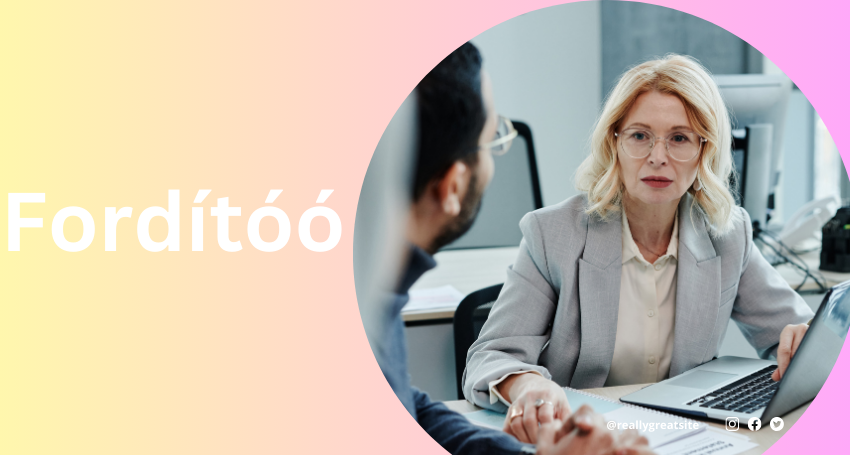In an increasingly more interconnected world, the capacity to bridge language limitations has turn out to be vital. Whether for commercial enterprise, journey, or private communication, translation performs a pivotal function in bringing humans and cultures closer together. The term “fordítóó,” derived from the Hungarian phrase “fordító,” because of this “translator,” encapsulates the essence of translation offerings and tools that help us navigate this multilingual global.
Translation services have developed from manual efforts to state-of-the-art virtual platforms, allowing seamless verbal exchange across languages. This article explores the diverse aspects of translation, consisting of its records, the upward thrust of translation equipment, the role of professional translators, and the future of the industry.
The History of Translation
The art of translation is as vintage as language itself. The earliest acknowledged translations date again to historical civilizations, wherein scribes translated spiritual texts, legal files, and literature. The Rosetta Stone, as an example, is a well-known artifact that showcases the interpretation of a single textual content into 3 distinct scripts—hieroglyphics, Demotic, and Ancient Greek.
Over time, translation has become an important tool for the spread of know-how. The translation of the Bible into Latin by using St. Jerome within the 4th century turned into a full-size milestone, influencing spiritual and cultural improvement across Europe. Similarly, at some stage in the Islamic Golden Age, scholars translated works from Greek, Persian, and Sanskrit into Arabic, preserving and increasing upon the information of ancient civilizations.
As alternate routes improved and empires grew, the want for translators improved. Translation became a respected profession, with translators serving as intermediaries among cultures. In contemporary times, the call for translation services has skyrocketed due to globalization, leading to the development of specialized fields including criminal, clinical, and technical translation.
The Rise of Translation Tools
The digital age has revolutionized the interpretation enterprise. The advent of computers and the internet has made translation quicker, extra on hand, and greater correct. Machine translation tools, including Google Translate, have grown to be ubiquitous, permitting customers to translate text instantly between masses of languages.
-
Machine Translation:
Machine translation (MT) refers to using software programs to translate text from one language to any other. Early MT systems, developed within the mid-twentieth century, relied on rule-primarily based techniques, where linguistic rules and dictionaries were programmed into the system. However, those systems regularly produced awkward or misguided translations.

The creation of statistical device translation (SMT) within the Nineteen Nineties marked a huge improvement. SMT systems analyzed great amounts of bilingual textual content to become aware of styles and make greater correct translations. Google Translate, launched in 2006, to begin with used this approach and speedy has become a popular tool for informal translation needs.
-
Neural Machine Translation:
The next leap in translation generation got here with the improvement of neural device translation (NMT). NMT uses artificial neural networks to model the entire translation method, mainly to extra natural and contextually suitable translations. Google Translate switched to NMT in 2016, appreciably enhancing the fine of its translations.
NMT systems are educated on large datasets of multilingual text, allowing them to understand nuances along with idioms, slang, and cultural references. While NMT isn’t always best and might nevertheless struggle with complex sentences or low-resource languages, it represents the cutting edge of the translation era.
Three. Computer-Assisted Translation (CAT) Tools:
While MY tools are popular for brief translations, expert translators regularly use pc-assisted translation (CAT) gear. CAT gear, which include SDL Trados Studio and MemoQ, assist translators work extra efficiently by providing functions like translation reminiscence, terminology control, and first-class assurance.
Translation reminiscence (TM) is a key aspect of CAT tools. It stores formerly translated segments of text, permitting translators to reuse them in destiny initiatives. This does not best hastens the translation manner but additionally guarantees consistency across documents.
The Role of Professional Translators
Despite the advancements in machine translation, human translators continue to be crucial. Professional translators bring a level of cultural know-how, creativity, and expertise that machines can’t mirror. They are specifically essential for complex texts, consisting of felony contracts, literary works, and advertising substances, where accuracy and tone are vital.
-
Specialization:
Many professional translators specialize in precise fields, which includes criminal, scientific, technical, or literary translation. This specialization permits them to expand a deep expertise of the terminology, fashion, and necessities of their chosen field. For example, a criminal translator has to be acquainted with the legal systems of both the source and target languages to make accurate translations.
-
Cultural Sensitivity:
Translation is not just about converting phrases from one language to another; it’s miles about conveying that meaning. A successful translation calls for an information of the cultural context wherein the textual content became written. For example, humor, idioms, and metaphors often do not translate directly and require innovative answers to retain their impact inside the goal language.
-
Quality Assurance:
Professional translators adhere to strict nice guarantee strategies. This can also consist of proofreading, editing, and peer overview to ensure the very last translation is accurate, coherent, and free of mistakes. Many translators also work with editors and proofreaders to refine their work and preserve high requirements.
The Future of Translation
The translation enterprise is constantly evolving, driven with the aid of improvements in generation and changes in international communication. Several developments are shaping the destiny of translation, along with:
-
Artificial Intelligence and Machine Learning:
Artificial intelligence (AI) and gadget getting to know (ML) are poised to further remodel the translation industry. As AI fashions emerge as greater sophistication, they will be capable of managing more and more complicated texts and languages. Future translation gear may additionally incorporate speech recognition and natural language processing (NLP) to provide real-time translation in spoken language.
-
Collaborative Translation:
Collaborative translation structures, consisting of crowdsourced translation, are gaining popularity. These structures permit users to make contributions to translations and corrections, growing a greater accurate and numerous translation database. Wikipedia, for instance, is based on volunteers to translate articles into multiple languages, making understanding on hand to an international target audience.

Three. Multimodal Translation:
With the rise of multimedia content, there is a developing call for multimodal translation, which includes translating text, audio, and visual elements concurrently. This is particularly applicable in fields like film, television, and on-line media, in which subtitles, dubbing, and voiceovers are used to reach international audiences.
-
Ethical Considerations:
As translation will become greater automated, ethical issues are coming to the leading edge. Issues along with data privacy, intellectual assets rights, and the capacity for bias in gadget translation models have to be addressed. The industry is likewise grappling with questions about the role of human translators in a more and more automatic world and a way to make certain fair repayment and popularity for his or her work.
Conclusion
Fordítóó, or translation, is a critical tool that permits conversation and know-how throughout languages and cultures. While generation has extensively advanced the sphere, human translators retain to play a crucial role in turning in accurate, culturally sensitive, and amazing translations. As the world turns into more related, the call for translation services will simplest develop, making it a thrilling and dynamic discipline with infinite opportunities for innovation.
Whether you are using a translation device for brief translations or counting on a professional translator for specialized work, the significance of translation can’t be overstated. It is through translation that we will proportion knowledge, build relationships, and foster mutual admire in our various and multilingual internationals.
FAQs
- What is Fordítóó?
Fordítóó is derived from the Hungarian phrase “fordító,” meaning “translator.” It refers to the broader concept of translation services, equipment, and platforms that facilitate communique throughout specific languages.
- How has translation advanced over the years?
Translation has evolved from manual efforts in ancient civilizations to sophisticated virtual structures. The creation of machine translation, observed by neural device translation, has revolutionized the field, making translation quicker and greater handy.
Three. What are CAT gear, and the way they fluctuate from device translation?
Computer-assisted translation (CAT) equipment, which includes SDL Trados Studio, helps professional translators work more efficiently via presenting functions like translation memory and terminology management. Unlike device translation, CAT gear are used by human translators to decorate their paintings in place of updating them.
- Why are human translators nonetheless important within the age of gadget translation?
Human translators convey cultural expertise, creativity, and understanding that machines can’t mirror. They are critical for complicated texts in which accuracy and tone are important, consisting of legal contracts, literary works, and advertising substances.
- What trends are shaping the destiny of translation?
Trends shaping the destiny of translation include advancements in synthetic intelligence and system getting to know, the upward push of collaborative translation platforms, the call for multimodal translation, and ethical considerations associated with records privacy and the position of human translators.
- What are the challenges of system translation?
Machine translation can conflict with complicated sentences, low-useful resource languages, and cultural nuances. It may additionally produce awkward or erroneous translations, specially in instances wherein context and creativity are required.
